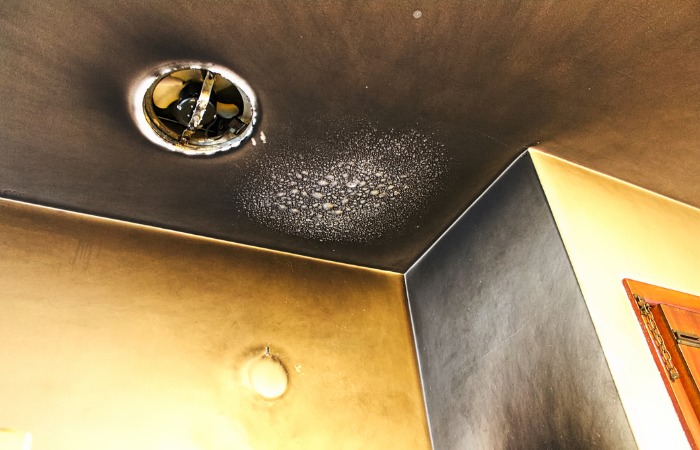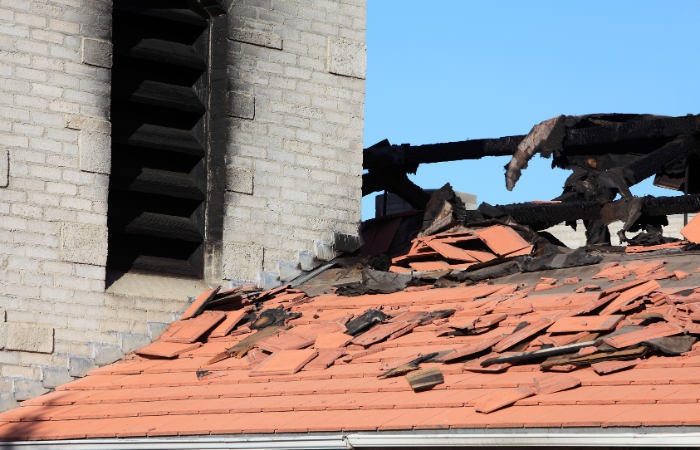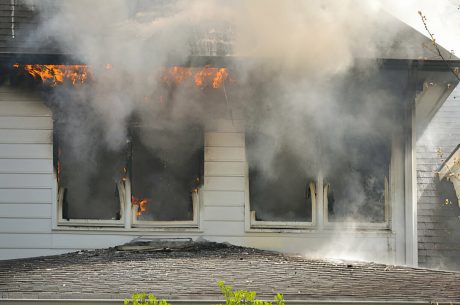When disaster strikes and your home is affected by a fire, the aftermath can be devastating. Aside from the obvious structural damage, one of the most significant challenges homeowners face is dealing with smoke damage clean up. The lingering smell, soot-covered surfaces, and potential health hazards can make the clean up process overwhelming and intimidating. However, with the right knowledge and preparation, you can navigate through this difficult situation and restore your home to its former glory.
In this comprehensive blog post, we will delve into the world of smoke damage clean up, equipping you with essential information on what to expect and how to prepare for the restoration process. Whether you’ve just experienced a fire or want to be well-informed for future emergencies, this guide will serve as your go-to resource.
Smoke Damage Overview
Smoke damage is a common consequence of fires and can have a significant impact on both the structural integrity and the indoor environment of a home or building. When a fire occurs, smoke particles and soot can infiltrate various surfaces and materials, leaving behind a pervasive odor and causing potential health hazards.
The effects of smoke damage can be visible and easily identifiable, such as blackened walls, ceilings, and furniture. However, smoke damage extends beyond what meets the eye. The microscopic particles released during combustion can penetrate deep into the pores of materials, making the cleanup process more challenging.
Smoke damage can manifest in several ways:
- Discoloration: Smoke leaves behind stains and discoloration on walls, ceilings, and other surfaces. These stains may range from light yellow to dark brown or black, depending on the intensity and type of fire.
- Lingering Odor: The strong, pungent smell of smoke can persist long after the fire is extinguished. It can permeate fabrics, carpets, and other porous materials, making it difficult to eliminate without proper cleaning techniques.
- Soot and Residue: Soot, a fine black powder composed of carbon particles, is a common byproduct of incomplete combustion. It can settle on surfaces and leave a greasy residue that is difficult to remove without appropriate cleaning methods.
- Corrosion and Erosion: Smoke contains corrosive substances that can damage metal surfaces, electrical equipment, and appliances. If left unaddressed, this corrosion can lead to further deterioration and potential safety hazards.
- Health Risks: Smoke particles can contain harmful substances such as carbon monoxide, volatile organic compounds (VOCs), and other toxic chemicals. Prolonged exposure to these contaminants can pose serious health risks, including respiratory issues, allergies, and other related ailments.
Addressing smoke damage requires a comprehensive cleanup and restoration process. It’s crucial to act swiftly to mitigate further damage and minimize health risks. Depending on the extent of the damage, professional restoration services may be necessary to ensure thorough and safe smoke damage clean up.
Types of Smoke Damage
Smoke damage from a fire can take many forms. It’s important to understand the different types of smoke and fire-related damage so that you can prepare for what may need to be addressed in your cleanup process.
- Soot Damage
It is one of the most common results of a fire. Soot consists of microscopic particles of carbon left behind by smoke and combustion. These particles settle on surfaces throughout the home or business and require special cleaning techniques in order to restore them properly.
- Fire Damage
It can include charred wood structures, melted plastics, and destroyed electrical wiring systems. Fire damage often requires specialized contractors trained in this type of repair work in order to ensure safety before any restoration efforts are undertaken.
- Smoke Odors
It occurs when odorous molecules become trapped in porous materials such as furniture fabrics, carpets, drywall, insulation, etc. Specialized deodorizing techniques must be used in order to remove these odors at their source. This will help prevent lingering smells after the cleanup process is complete.
- Charring Damage
This occurs when exposed materials have been burned beyond recognition due to extreme heat exposure during fires. Charring usually requires replacement with new materials as it cannot be cleaned or restored safely or effectively enough through traditional methods alone.
Air quality should always be monitored following smoky conditions caused by either fire or other sources like cigarettes or cooking activities that produce smoke residue build-up inside homes or businesses over time. Professional air quality monitoring equipment should be employed if necessary to determine safe air levels prior to reoccupation following a smoke incident.
How to Prepare for Smoke Damage Clean Up

Preparing for damage clean up is crucial to ensure a smooth and efficient restoration process. By taking the following steps, you can be well-prepared for the cleanup and increase the effectiveness of the restoration efforts:
– Safety First: Before beginning any cleanup activities, prioritize safety. Ensure that the property is structurally stable and safe to enter. If there are any concerns about structural integrity or potential hazards, contact a professional to assess the situation before proceeding.
– Consult Professionals: Engage the services of a reputable smoke damage restoration company. They have the expertise, experience, and specialized equipment to handle the cleanup process effectively. Consult with them early on to assess the damage, develop a restoration plan, and determine the resources required.
– Document the Damage: Take detailed photographs or videos of the smoke-damaged areas before any cleanup begins. This documentation will serve as evidence for insurance claims and assist the restoration professionals in assessing the extent of the damage.
– Notify Insurance Provider: Contact your insurance provider as soon as possible to report the smoke damage. Provide them with the necessary information and documentation to initiate the claims process. Understand your policy coverage and any requirements or restrictions related to smoke damage restoration.
– Secure the Property: If the property is not habitable or requires extensive repairs, secure the premises to prevent further damage and unauthorized access. Lock doors and windows, or consider boarding up damaged areas if necessary.
– Salvage Valuables: Identify and remove any valuable or sentimental items from the affected areas. Move them to a safe and clean location to protect them from further damage during the cleanup process.
– Create an Inventory: Make a detailed inventory of the damaged items, including their descriptions, estimated value, and condition. This inventory will assist in the claims process with your insurance provider.
– Gather Necessary Documents: Organize important documents related to your property, including insurance policies, contact information for contractors and restoration professionals, and any relevant warranties or maintenance records. Having these documents readily accessible will streamline the restoration process.
– Ensure Adequate Ventilation: Open windows and doors to promote airflow and ventilation. This helps reduce smoke odor and improve air quality. If necessary, use fans or dehumidifiers to enhance the circulation of fresh air.
– Communicate with Restoration Professionals: Maintain open communication with the restoration professionals throughout the process. They can guide you on necessary preparations, answer your questions, and keep you informed about the progress of the restoration work.
What to Expect
When dealing with smoke clean up, it’s important to have realistic expectations about the process. Here’s what you can generally expect during smoke damage restoration:
- Initial Assessment: A professional restoration team will assess the extent of the smoke damage, both visible and hidden. They will evaluate the affected areas, determine the scope of the restoration work required, and provide you with an estimate of the time and cost involved.
- Restoration Timeline: The duration of the restoration process depends on the severity of the smoke damage. Minor cases may be resolved within a few days, while extensive damage could take weeks or longer. Your restoration team will provide you with a timeline based on the specific circumstances.
- Odor Removal: Smoke odor can be persistent and challenging to eliminate completely. During the restoration process, specialized techniques such as thermal fogging or ozone treatment may be employed to neutralize odors. However, it’s important to note that some residual odor may linger, especially in fabrics and porous materials. Proper ventilation and ongoing maintenance can help minimize any remaining odors.
- Cleaning and Restoration: The restoration team will clean all affected surfaces, including walls, ceilings, floors, furniture, and personal belongings. They will use appropriate cleaning methods, such as dry or wet cleaning, depending on the materials involved. Some items may require off-site cleaning and restoration if the damage is extensive.
- Content Management: Personal belongings that were affected by smoke damage may need to be removed from the property for specialized cleaning and restoration. The restoration team will carefully pack and transport these items to a secure facility for cleaning, deodorizing, and restoration before returning them to you.
- Repairs and Reconstruction: In cases where the smoke damage has caused structural or cosmetic issues, repairs and reconstruction may be necessary. This can involve repainting walls, replacing damaged flooring, or repairing damaged structures. The restoration team may work in collaboration with contractors or recommend reputable professionals for these tasks.
- Professional Expertise: Engaging professional smoke damage restoration services ensures that the process is carried out efficiently and effectively. Certified technicians have the knowledge, experience, and specialized equipment to handle the cleanup, repair, and restoration tasks required for a thorough recovery.
- Insurance Involvement: If your property is covered by insurance, it’s important to involve your insurance provider early in the process. They will guide you through the necessary documentation, claims process, and reimbursement for the restoration expenses.
It’s worth noting that every smoke damage situation is unique, and the specific steps and processes may vary accordingly. Working closely with a professional restoration team will help you better understand the details and expectations specific to your situation.
Final Thoughts
Smoke clean up doesn’t have to be overwhelming if you know how to prepare ahead of time. Remember to take all necessary safety precautions, consult professional cleaners as needed, and implement preventative measures like regular inspections and investing in equipment like carbon monoxide detectors. With some simple steps, you’ll be on your way toward minimizing the impact of smoke-related damages.
If you need help with smoke damage in Bradenton, PuroClean Bradenton. We understand the challenges you face after a fire and the importance of prompt and thorough smoke damage clean up. Our dedicated team is ready to assist you every step of the way. Contact us today for reliable and professional smoke damage restoration services.


